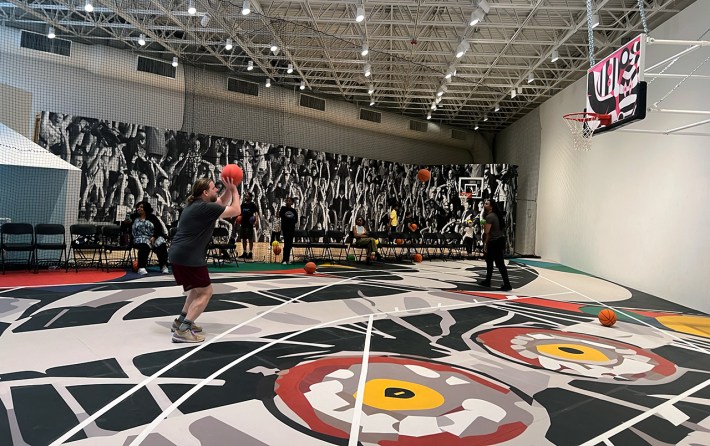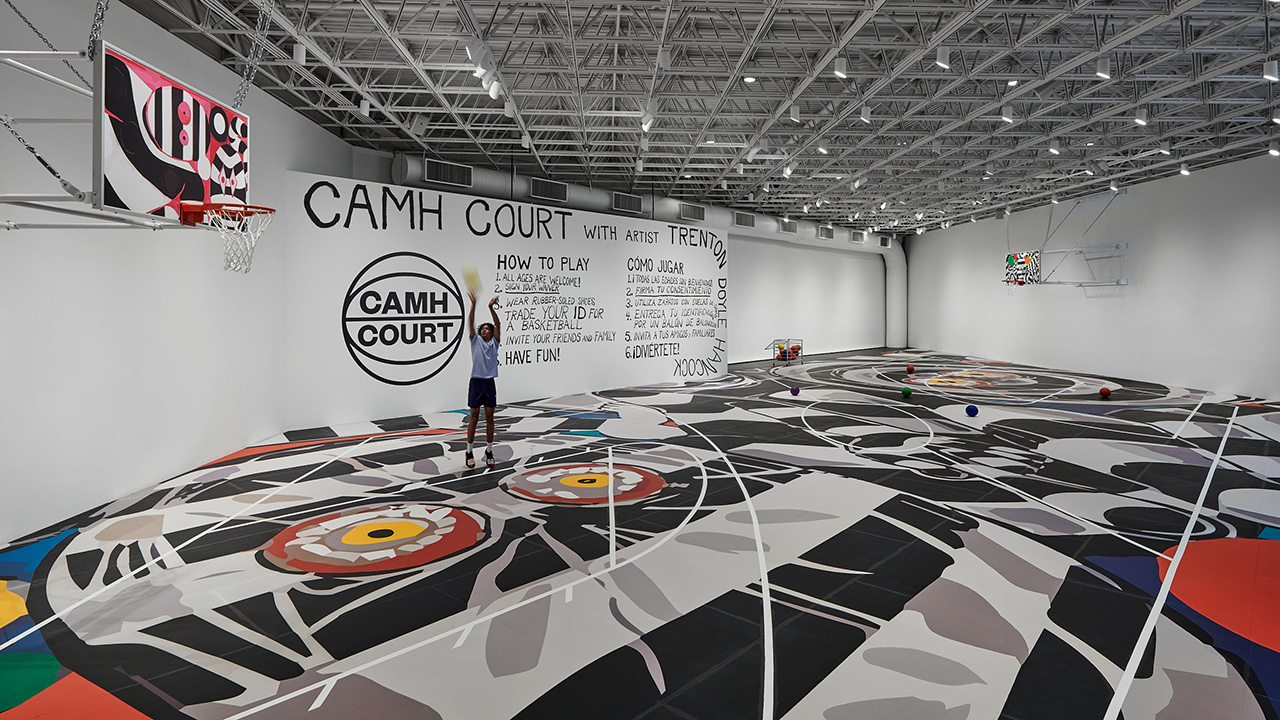HOUSTON — I’m driving down the court and I don’t know where to go. Partly this is because I’m not very good at dribbling. But also this is not a game. I am basically by myself on this full-court run to the basket. I am old, but I have been playing basketball my whole life. I should be able to lay it in.
But the lines that usually help guide me down the court aren’t there. Or rather they are there, but they are in a wild configuration. After a few fast breaks, I finally get my bearings and lay one in. But it was hard—way harder than usual. The basketball court has a wild design, too. It is not a rectangle; it’s a parallelogram. Also, it’s at an art museum.
CAMH COURT is open through April 27 at the Contemporary Arts Museum Houston. It is a basketball court designed to fill the museum's first floor exhibition space. Its modernist architecture makes for a challenging space for a basketball court, but Houston artist Trenton Doyle Hancock and the team at CAMH pulled it off, and have created an incredibly engaging artwork.
The project was nearly three decades in the works, in a way. In 1994 a staff member at the CAMH was looking at the large first-floor gallery space and asked: “What if we turn it into a basketball court?” The idea was tossed around for years, and became lore at the museum. CAMH finally started making it a reality last year.
It probably helped that the institution had basketball on the brain after a project where the museum commissioned artists to create posters of Rockets legends. Staff members started really looking into how they could possibly turn this parallelogram into a court, and Adidas agreed to sponsor it. Hancock had done work at the museum before; his first solo exhibition (Trenton Doyle Hancock: The Life and Death of #1) was there in 2001 and a retrospective (Trenton Doyle Hancock: Skin and Bones, 20 Years of Drawing) ran in 2014. Hancock and the museum worked with Creative Sports Concepts to make the court. CAMH chairman Hesse McGraw said Hancock was a fitting person to design it.
“He wanted the design to be something that would that create a new kind of environment that one could potentially get lost in,” McGraw said, “one where you can really be immersed in the space. This is how he thinks about his other work—the paintings themselves are a kind of play. And so translating that idea into the space of the court, I think, was pretty natural for him.”

A basketball court might seem like an odd choice for a museum, but CAMH is not a usual museum. It is one of the few non-collecting museums in the country. All of its exhibitions are temporary installations. That leads to a museum that’s more forward-looking, McGraw says: “You’re sort of always focused on the present, and trying to find ways to innovate in terms of how artists and audiences connect.”
Now I’m going to find new ways to innovate in terms of making you groan: CAMH Court is a slam dunk! The first time I went there were just a handful of people there. I struggled with the court. I thought about how visual guidelines help us navigate the world. I went to Houston's Rothko Chapel the same day, and it was also nice. But I had a more transcendent experience at CAMH Court.
“What’s been interesting to watch is which people immediately get it,” McGraw said. “They walk in and pick up a ball and just start participating. And to have that kind of contemporary art actually feels pretty special. Most museums are rarified, or most experiences of museums are pretty inert. We wanted to find a way that people can have a really active and animated experience.”






